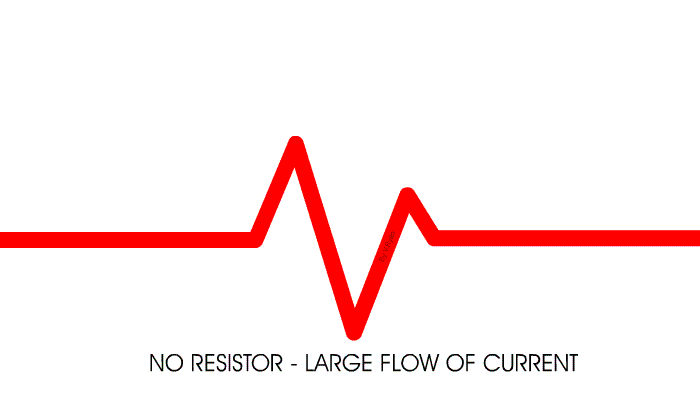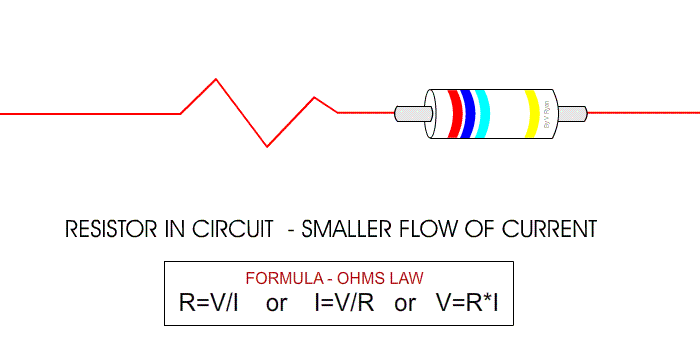| CLICK HERE FOR INDEX PAGE | |||
| RESISTORS | |||
| V. Ryan © 2002 - 2022 | |||
| PDF FILE - CLICK HERE FOR PRINTABLE EXERCISE BASED ON WORK BELOW | |||
|
Resistors determine the flow of current in an electrical circuit. Where there is high resistance in a circuit the flow of current is small, where the resistance is low the flow of current is large. Resistance, voltage and current are connected in an electrical circuit by Ohmís Law. |
|||
 |
|||
|
|
|||
|
When a resistor is introduced to a circuit the flow of current is reduced. The higher the value of the resistor the smaller/lower the flow of current. |
|||
|
|
|||
| Resistors are used for regulating current
and they resist the current flow and the extent to which they do this is
measured in ohms (Ω). Resistors are
found in almost every electronic circuit. The most common type of resistor consists of a small ceramic (clay) tube covered partially by a conducting carbon film. The composition of the carbon determines how much current can pass through. |
|||
| FOUR BAND RESISTOR - LOWER TOLERANCE | |||
|
Resistors are too small to have numbers printed on
them and so they are marked with a number of coloured bands. A resistor’s value is determined by reading its colour bands from a resistor table / chart. The first band and second band represent numbers and the third band is the amount they are multiplied by. The fourth band represents the resistors accuracy, known as its TOLERANCE’. |
|||
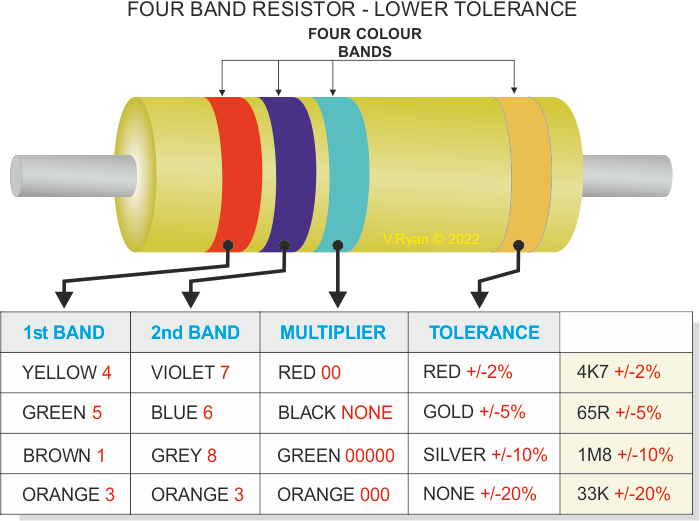 |
|||
| FIVE BAND RESISTOR - LOWER TOLERANCE | |||
| Five colour band resistors, have a higher degree of accuracy, in terms of their resistance value. Six colour band resistors also exist and give even further accuracy. | |||
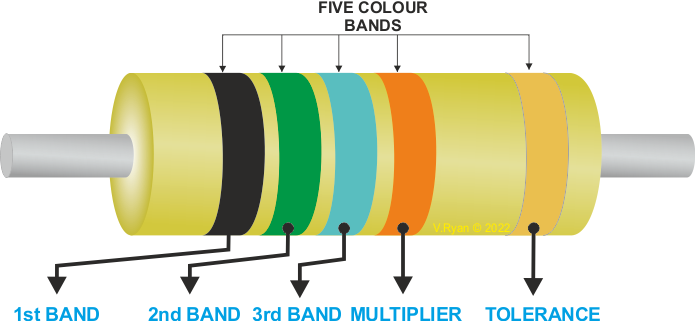 |
|||
| A typical resistor value chart is shown below. This chart can be used to read both, four and five colour band resistors. Two examples have been worked out: the four colour band at the top of the table and the five colour band resistor below the chart. | |||
| PDF FILE - CLICK HERE FOR POSTER / CHART ON RESISTOR VALUES AND COLOUR BANDS | |||
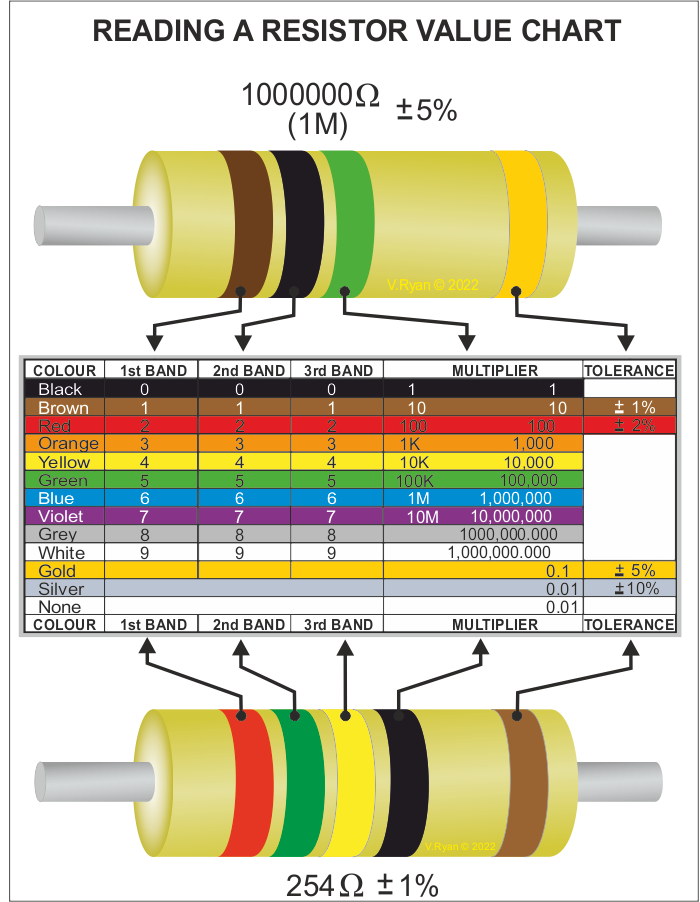 |
|||
PDF FILE - CLICK HERE FOR BASIC QUESTIONS ON RESISTOR VALUES AND OHMS LAW |
|||
| The value of a resistor can be written in a variety of ways. Some examples are given below: | |||
|
|
|||
| A common value is 'K' which means one thousand ohms. So if a resistor has a value of 7000 ohms it can also be said to have a value of 7K. | |||
|
RESISTORS IN SERIES AND IN PARALLEL |
|||
|
Resistors can be connected together in two ways to
give different overall values. This is especially useful if you do not
have a resistor of the correct value and need to make it up from other
available ones. |
|||
|
1. Resistors in SERIES - When resistors are connected in series, their values are added together:
|
R total=R1+R2 |
||
|
|
|||
|
For example: 1K+1K+3K9=5K9 (total value) |
|||
| 2.
Resistors in PARALLEL -When resistors are connected in
parallel, their total resistance is given as:
|
1/Rtotal = 1/R1 + 1/R2 |
||
|
|
|||
|
For example: 1/Rtotal = 1/1K + 1/1K = 0.5K or 500 ohms OR= R1 x R2 R1 +R2
= 1 x 1 = 1
1 +1 = 2 =
0.5k |
|||
|
VARIABLE RESISTORS |
|||
|
|
Variable resistors have adjustable values. Adjustment is normally made by turning a spindle (e.g. the volume control on a radio) or moving a slider. |
||
|
SYMBOL |
|||
|
The rotary variable resistor is the cheapest type of variable resistor. A smaller version of this variable resistor is the pre-set resistor. The pre-set resistor is the type usually used in small electronic projects (you will probably use this type in school based projects). |
|
||
|
PRESET RESISTOR |
|||
|
CLICK HERE FOR POTENTIAL DIVIDERS SHEET (RESISTORS CONTINUED) |
|||
|
|
|||
